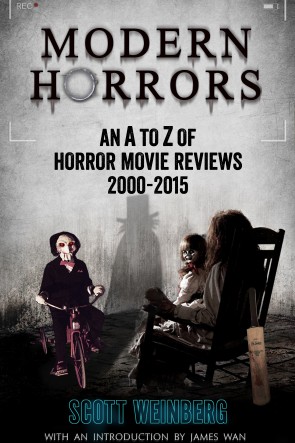Review: THE NIGHTMARE (2015){0}
Rodney Ascher’s 2012 documentary Room 237, an examination of conspiracy theories surrounding Stanley Kubrick’s The Shining, was such a brilliantly bizarre concoction, it was difficult to imagine what, if anything, he would come up with next.
Luckily for fans of Room 237, Ascher found inspiration within himself, specifically his experience with ‘sleep paralysis’, a condition in which people find themselves trapped between sleep and wakefulness, trapped in their own bodies, aware of their surroundings, and quite often experiencing disturbing sights and sounds, many of which – like the terrifying ‘shadow man’ – are common to a surprisingly large number of sufferers.
One of Room 237’s most effective conceits was to keep its interview subjects off camera, allowing their audio to guide clips and cuttings from Kubrick’s famously divisive horror film. For The Nightmare, Ascher has dreamed up an even more devilishly clever conceit: to take the ‘waking nightmare’ experiences of his eight subjects (all of whom appear on camera) and bring them to life, creating some genuinely effective horror-movie imagery which is all the more frightening for being based in somebody’s own experiences, torn from the subconscious, or unconscious, of Ascher’s subjects. Any horror film worth its place in the genre would be lucky to have some of the horrors on display here, and even without the based-on-an-actual-nightmare commentary, they could potentially have the ‘meta’ effect of provoking nightmares, by planting images in the audience’s subconscious.
The early part of the film explains the phenomena through the recollections of its diverse participants (although not an interview subject himself, Ascher himself appears both behind and in front of the camera), revealing the surprising common factors among the specific visions – hallucinations? – experienced during sleep paralysis: shadow figures, men in hats, and spindly alien ‘greys’ seem to recur, research has shown, across geographical, ethnic, political, social and economic borders. Are they expressions of Mankind’s collective unconscious? Are they simply the sleep-addled brain’s rendition of the human form, probably the most common image embedded in our brains? Are they linked to melatonin or one of the other mysterious chemicals found in the human brain, sometimes released by the pineal gland, said to regulate sleep patterns?
You’d think that Ascher would be keen to get to the bottom of the mystery, given his personal encounters with the shadowy entities his subjects conjure, literally, from their worst nightmares. For the most part, however, Ascher seems more interested in discussing the phenomenon, rather than investigating or attempting to explain it: at no point does a white-coated polysomnography expert rock up to tell us that misfiring synapses, melatonin bursts or other cryptic brain functions may be responsible for the phenomenon of sleep paralysis, or the visions it conjures up. (For that, I strongly suggest watching the old Horizon episode, Close Encounters, which makes a compelling case for a causal link between sleep paralysis and the ‘alien abduction’ experiences.)
Instead, like any dream related at length to another person, The Nightmare becomes repetitive, diminishing its potency after an hour or so. In Room 237, Ascher let his interview subjects speak for themselves, creating a film that was almost entirely insight and analysis, however misguided, counter-intuitive or just plain daft. Here, we have a great deal of first hand experience, imaginatively brought to life (I expect Blumhouse to announce a major horror film for Ascher at some point), but precious little insight or analysis. As a result, The Nightmare feels caught between one state and another – much like its subjects.
David Hughes
THE NIGHTMARE is on VOD now (US) and is is UK cinemas from October 9









